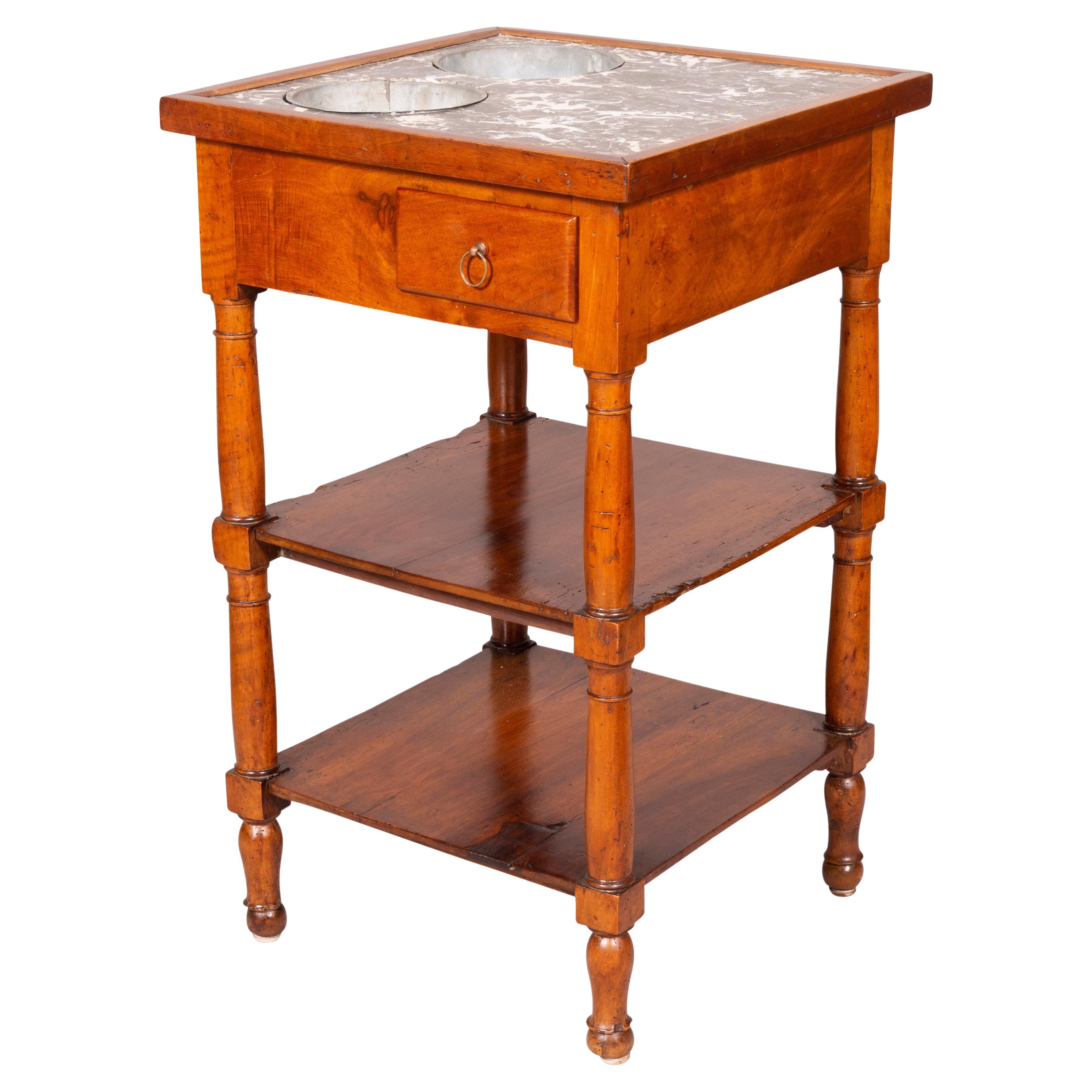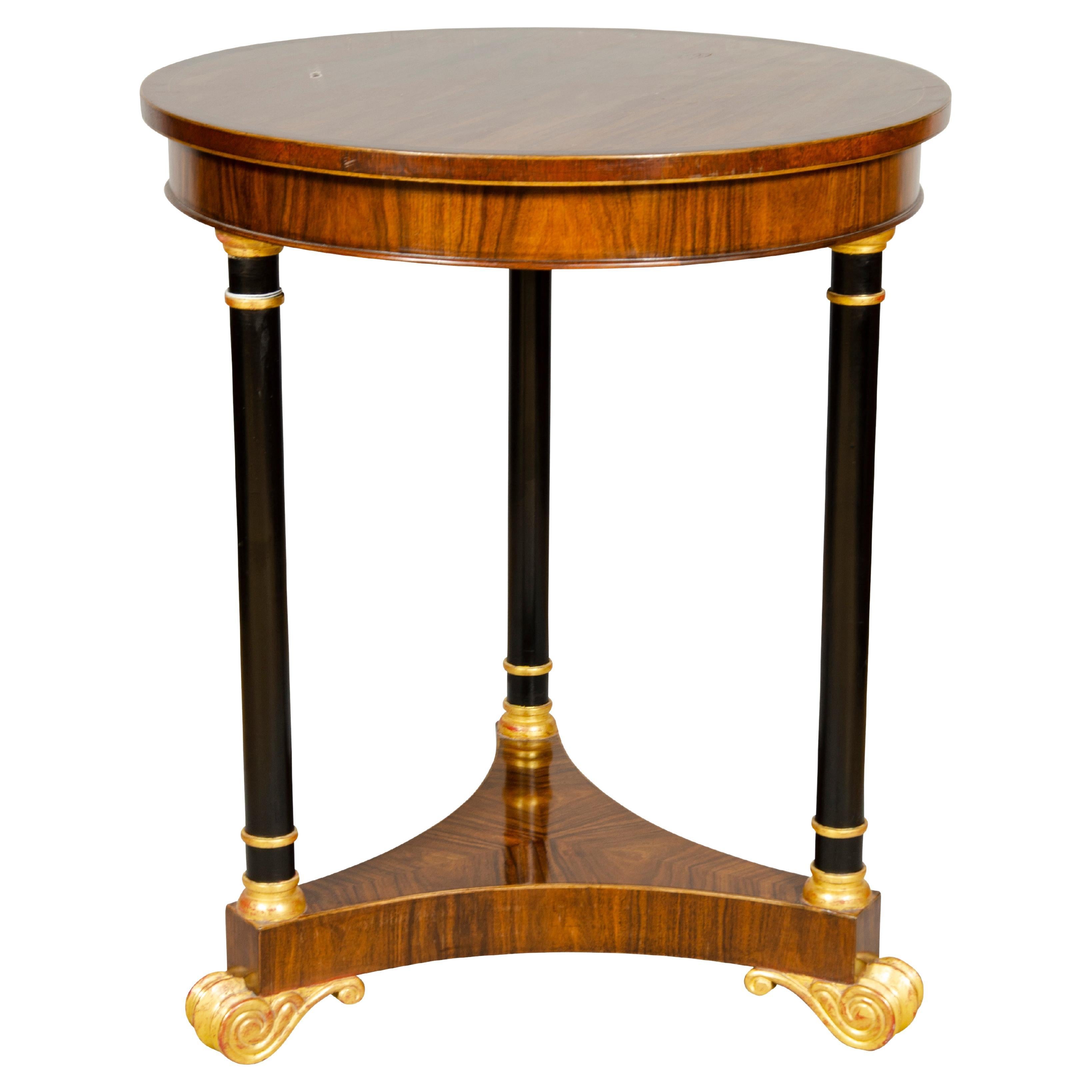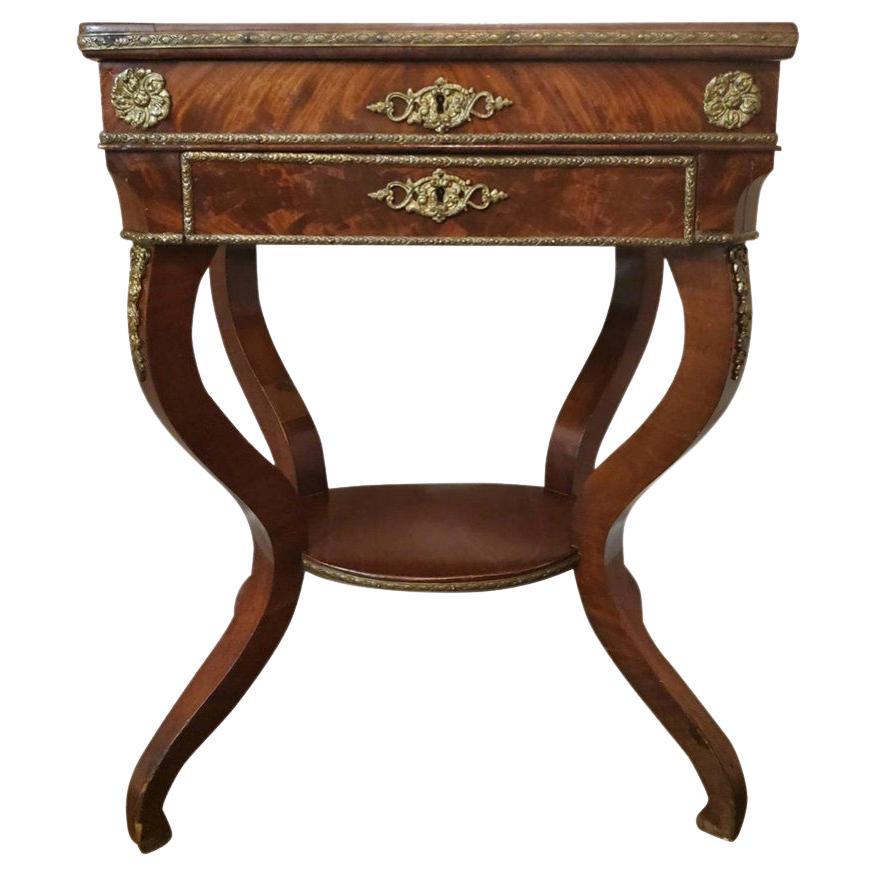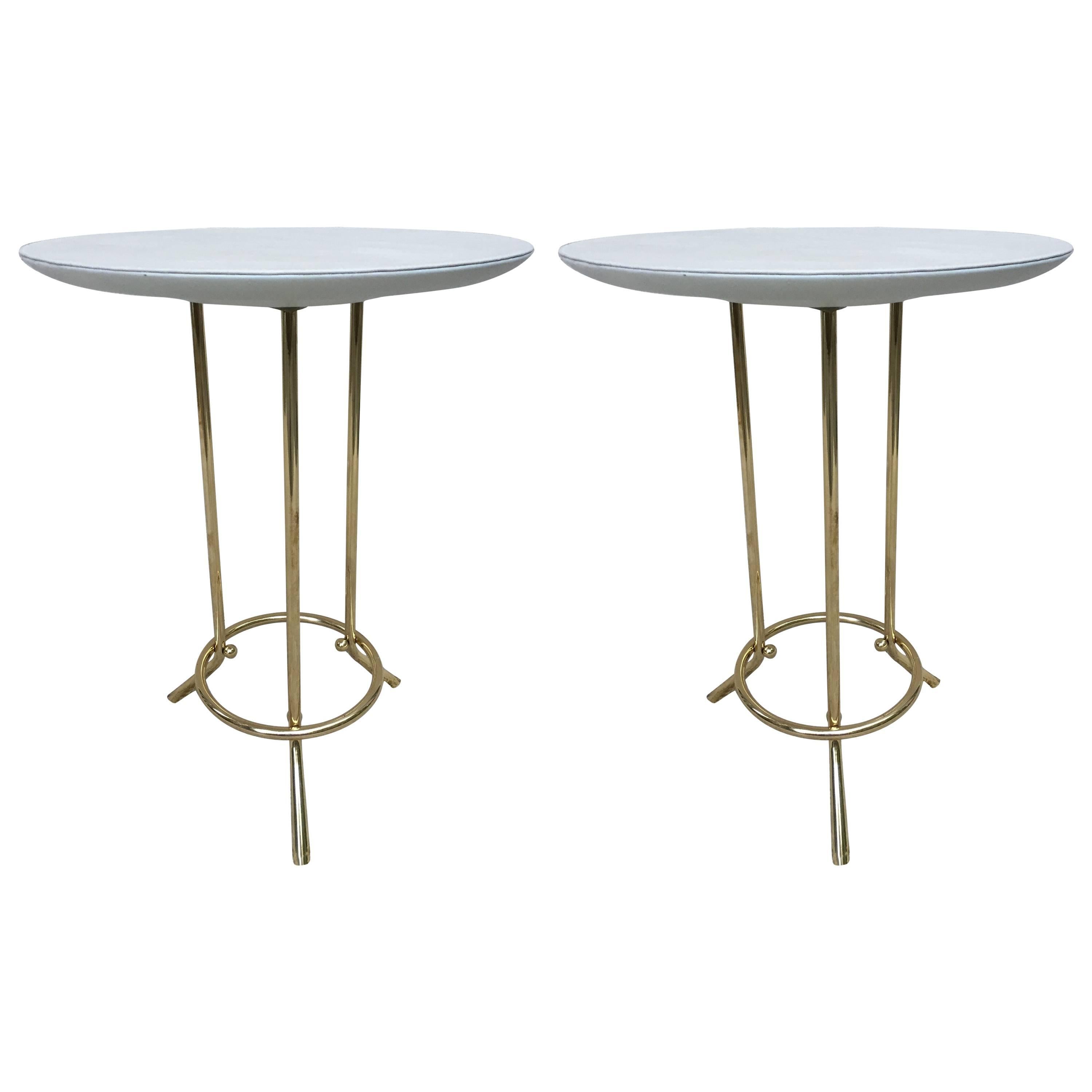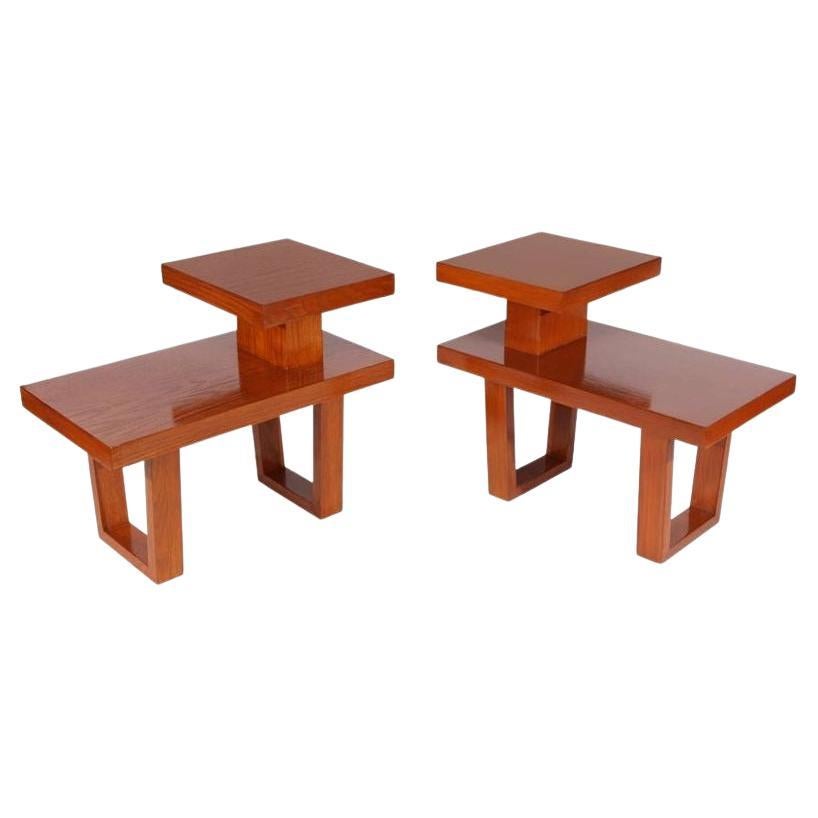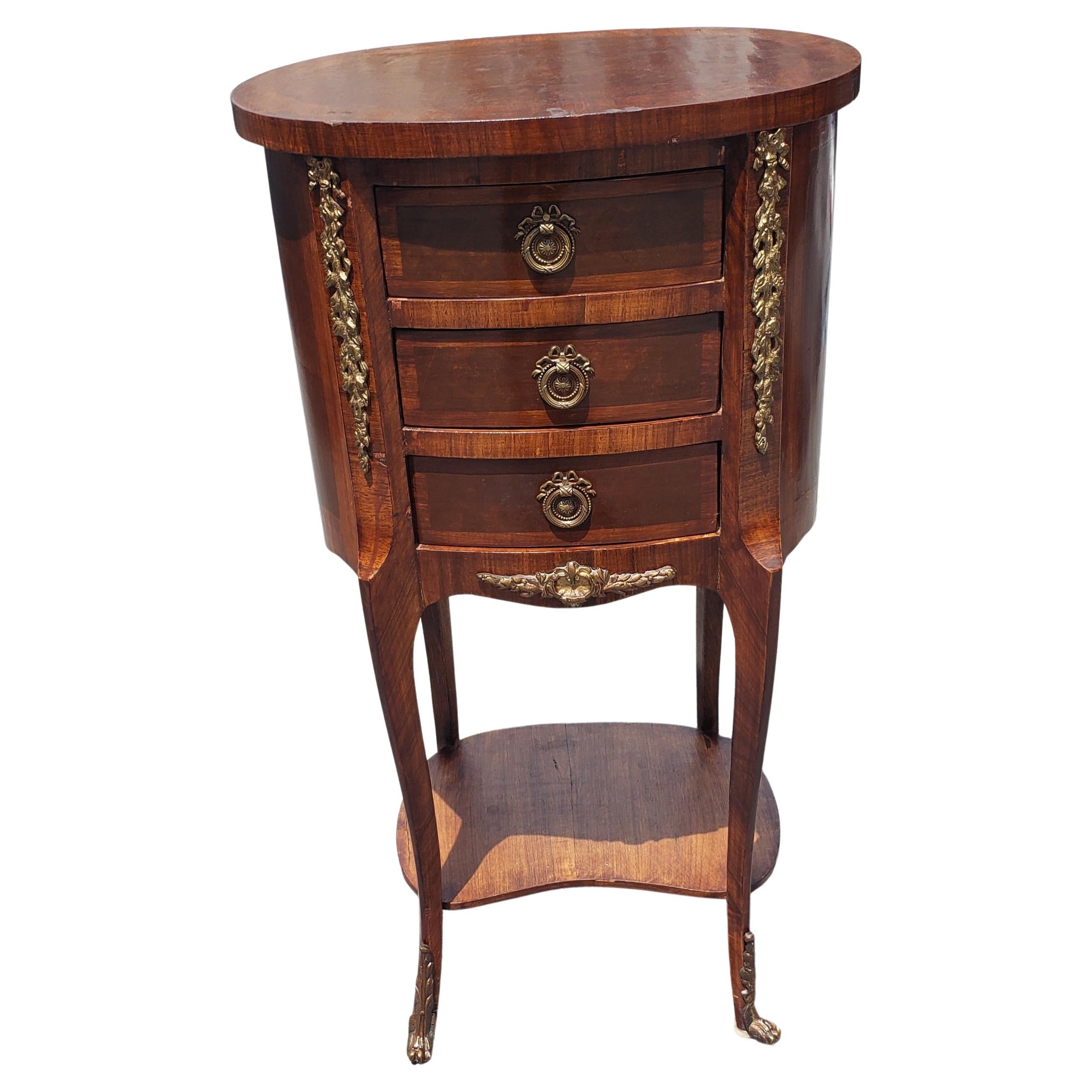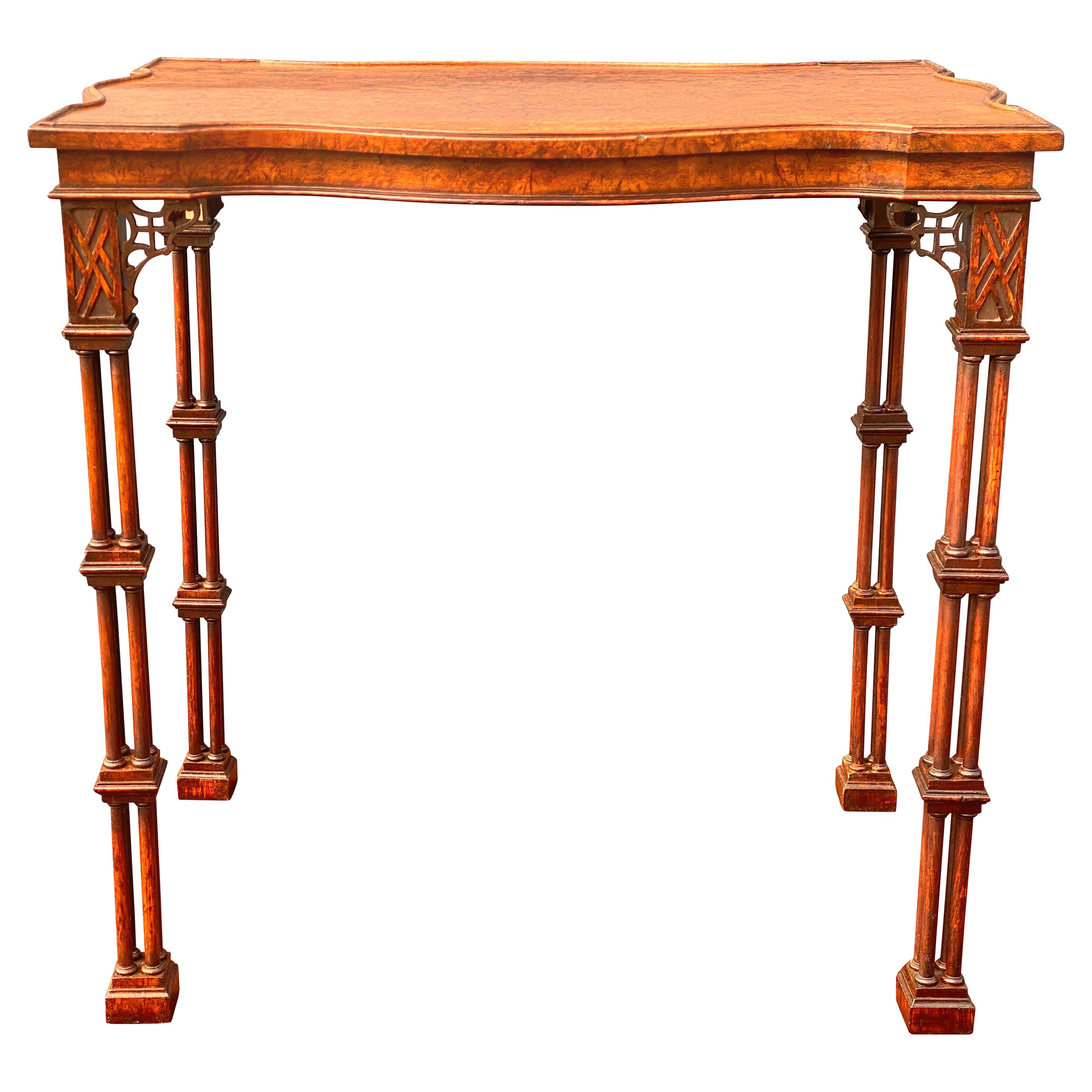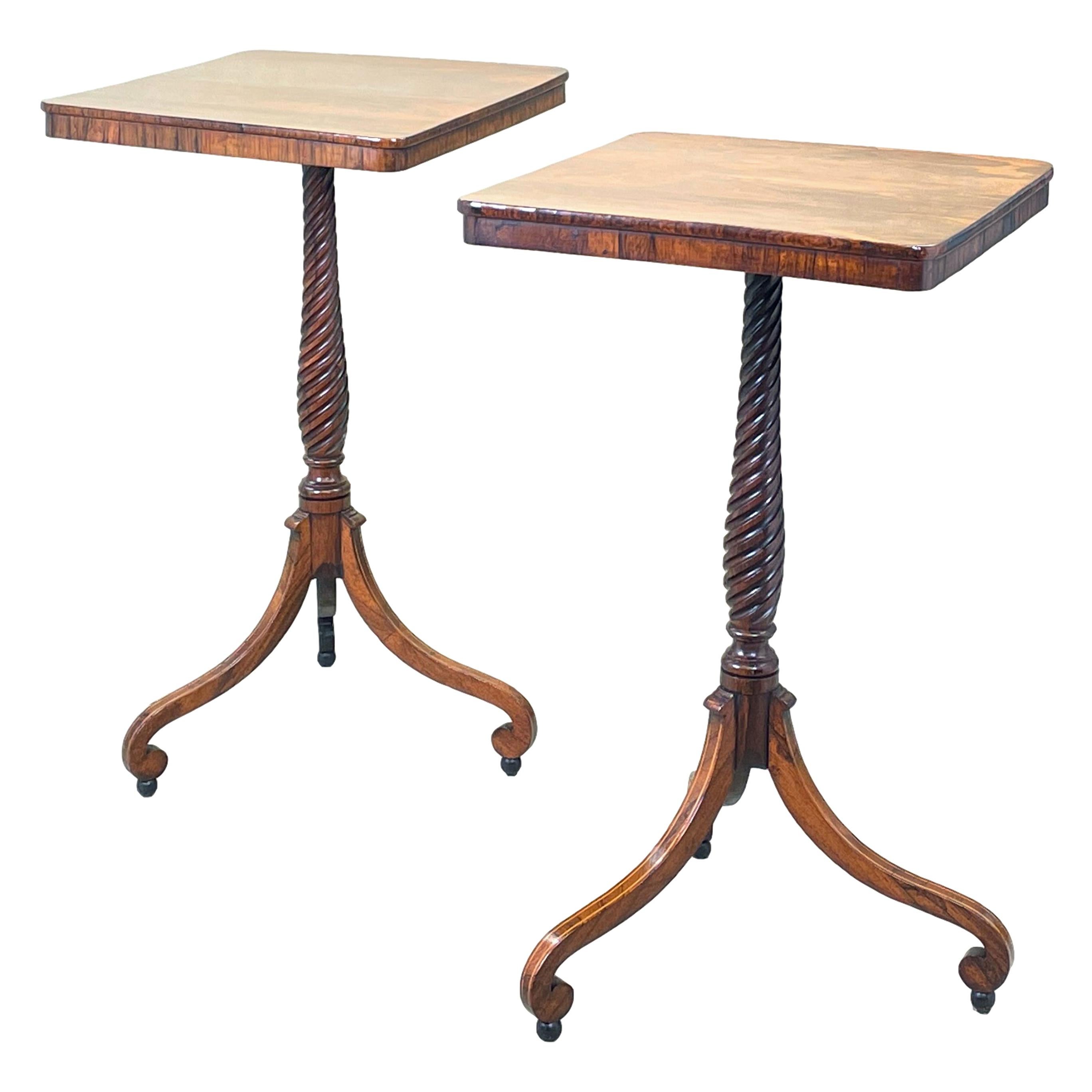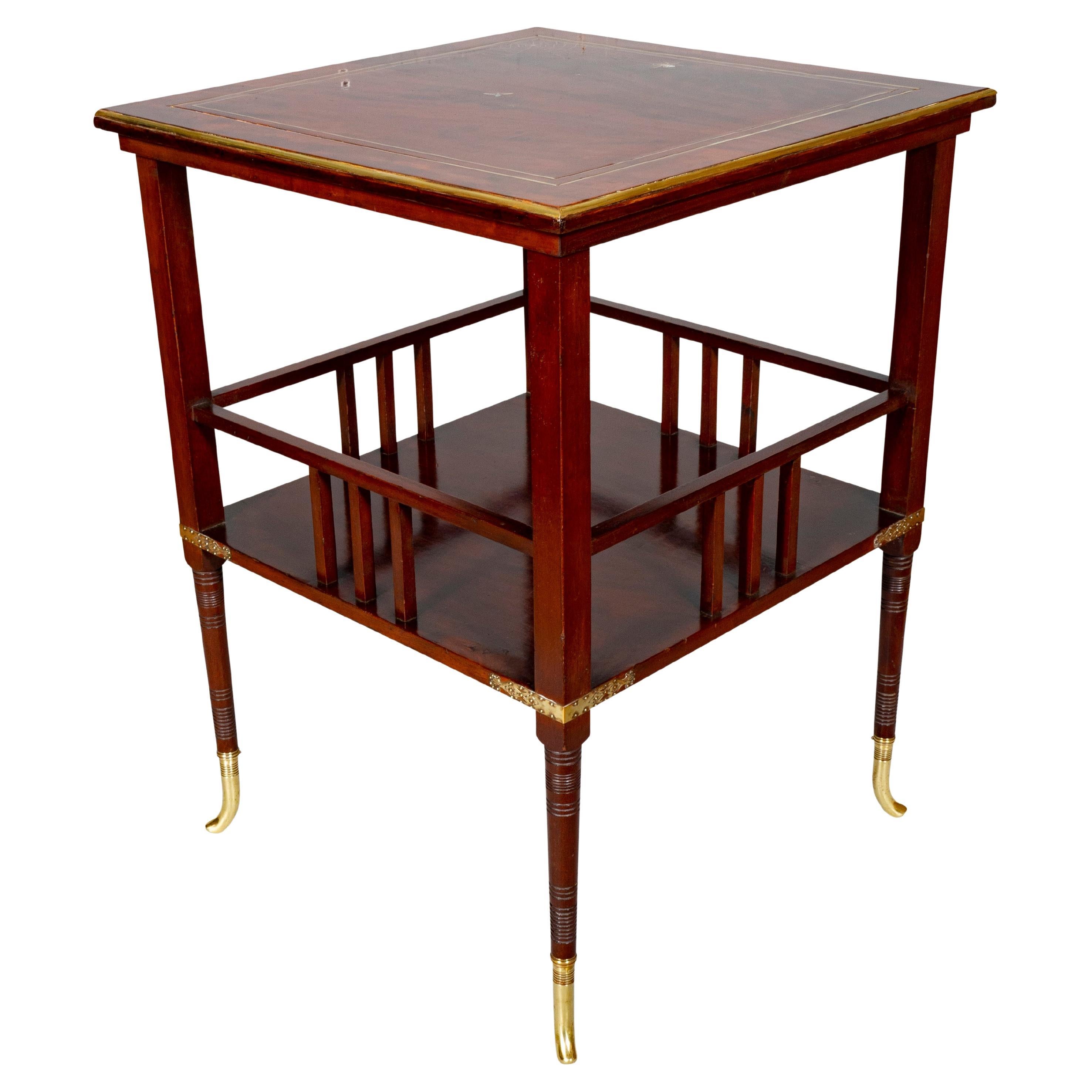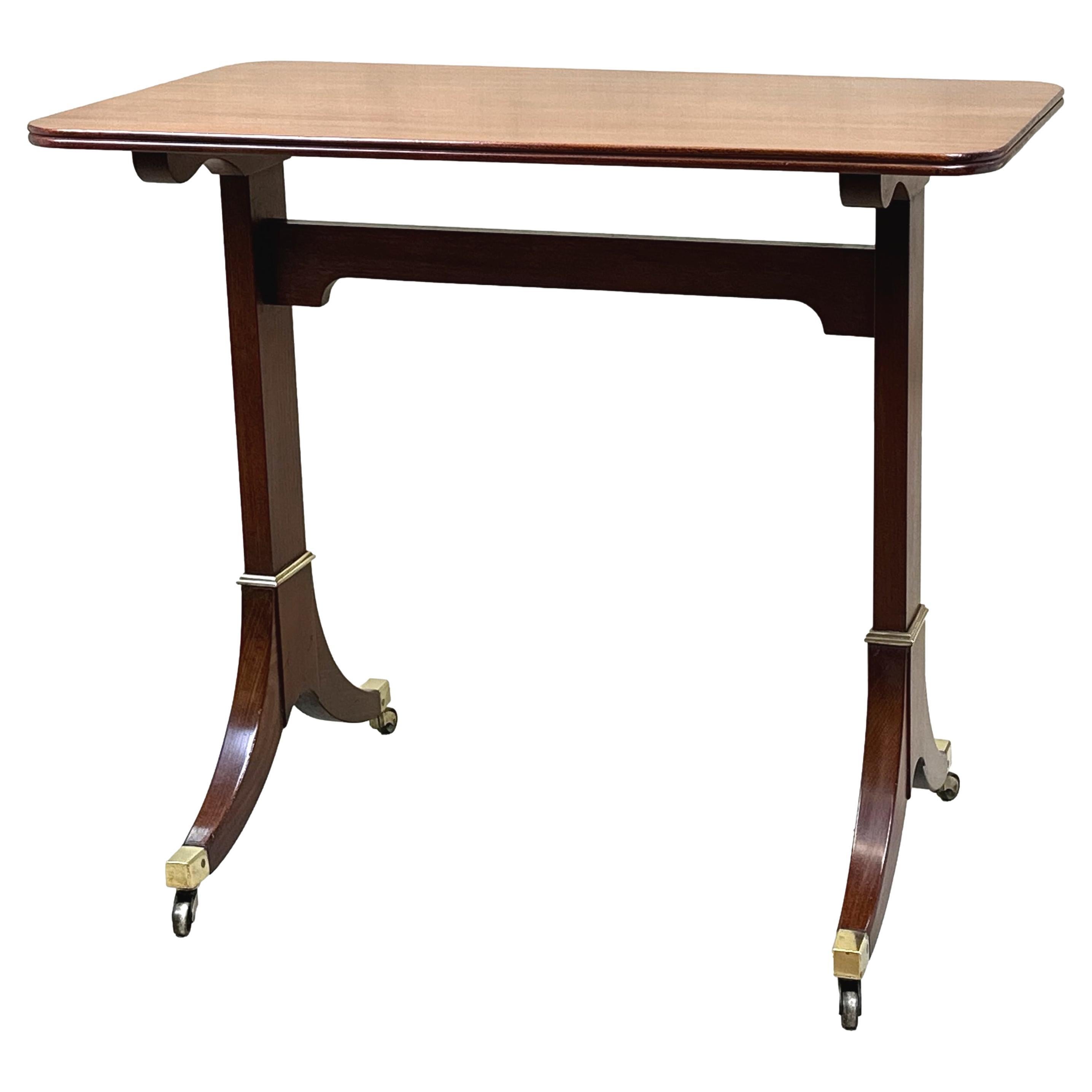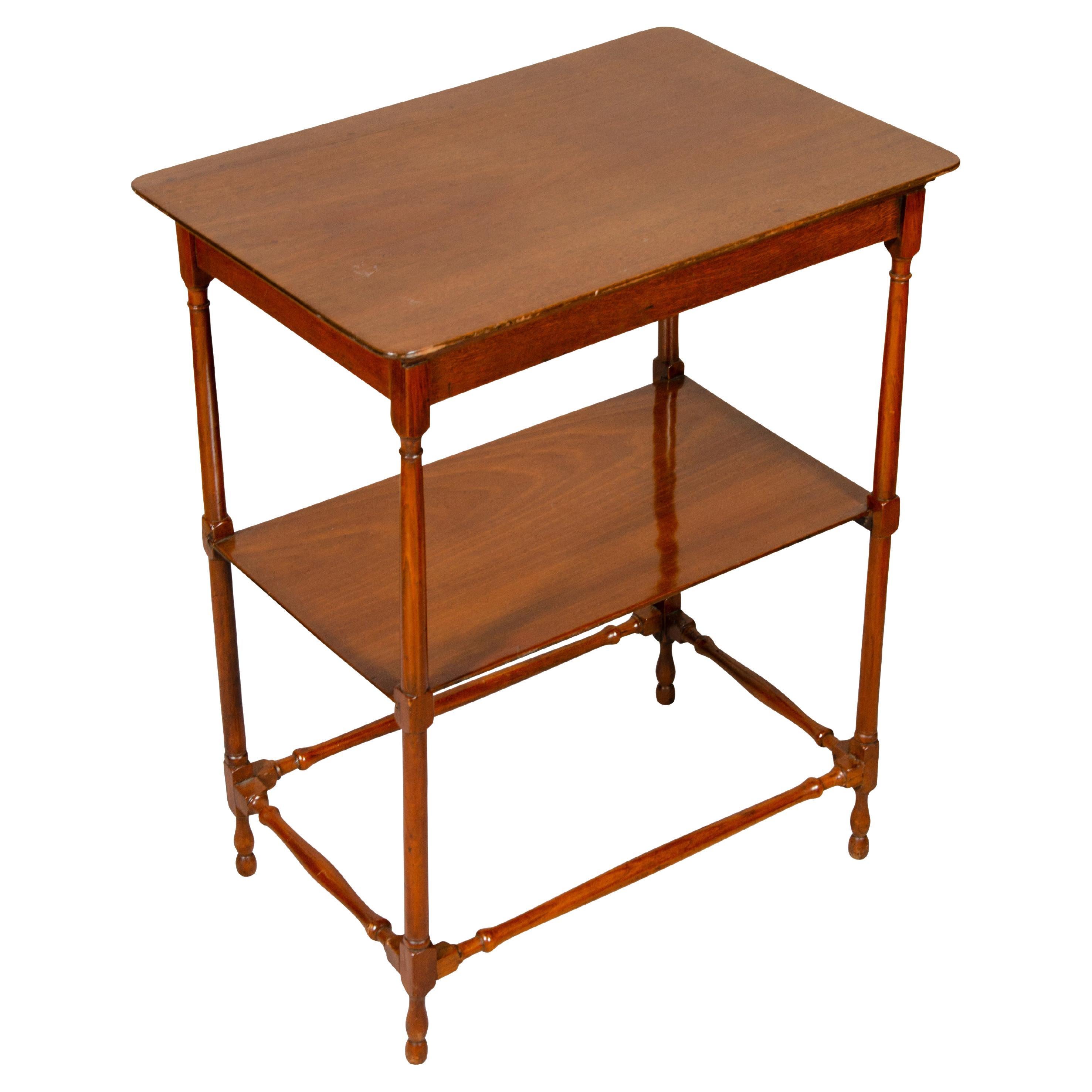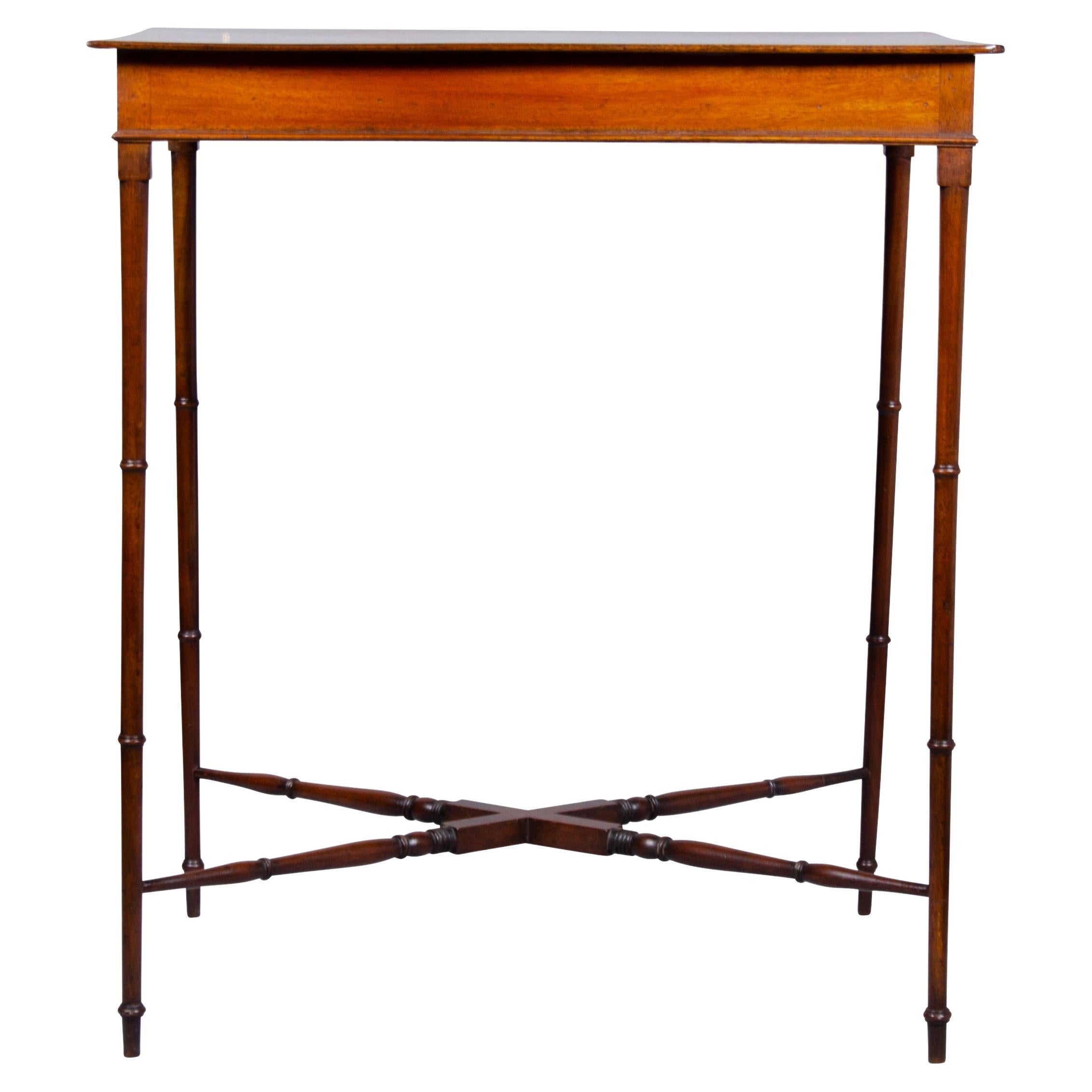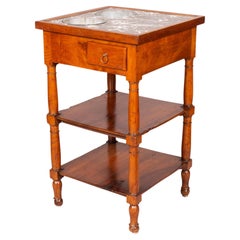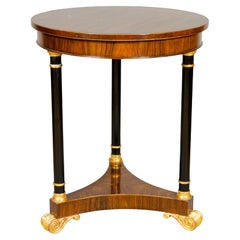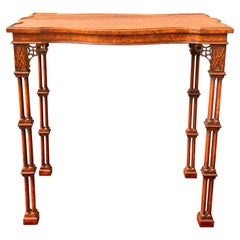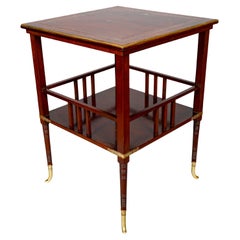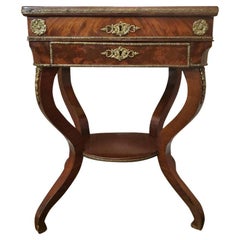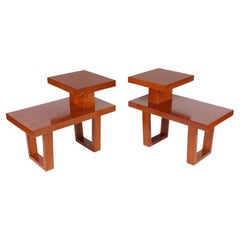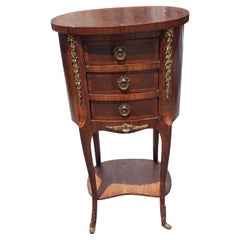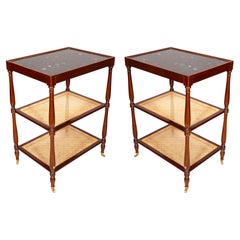
Pair of Charles X Style Mahogany Tables
View Similar Items
Want more images or videos?
Request additional images or videos from the seller
1 of 15
Pair of Charles X Style Mahogany Tables
About the Item
- Dimensions:Height: 28.5 in (72.39 cm)Width: 20.63 in (52.41 cm)Depth: 15.13 in (38.44 cm)
- Sold As:Set of 2
- Style:Charles X (In the Style Of)
- Materials and Techniques:Cane,Mahogany
- Place of Origin:Europe
- Period:1820-1829
- Date of Manufacture:1900
- Condition:
- Seller Location:Essex, MA
- Reference Number:1stDibs: LU838128633272
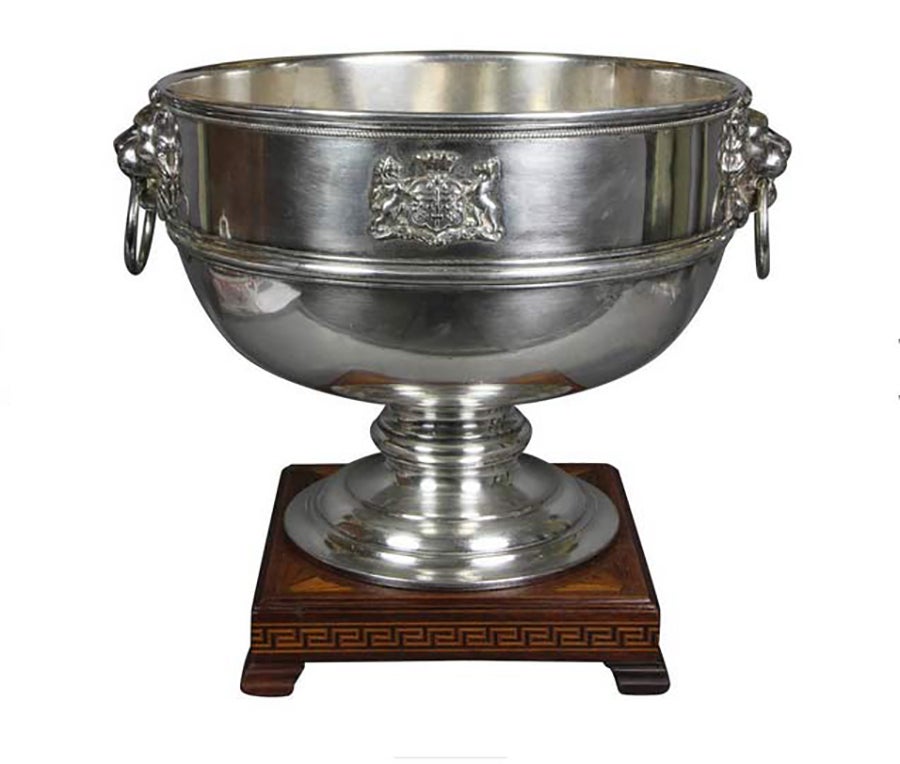
About the Seller
4.9
Gold Seller
Premium sellers maintaining a 4.3+ rating and 24-hour response times
Established in 2007
1stDibs seller since 2007
913 sales on 1stDibs
Typical response time: 5 hours
Associations
The Art and Antique Dealers League of America
Authenticity Guarantee
In the unlikely event there’s an issue with an item’s authenticity, contact us within 1 year for a full refund. DetailsMoney-Back Guarantee
If your item is not as described, is damaged in transit, or does not arrive, contact us within 7 days for a full refund. Details24-Hour Cancellation
You have a 24-hour grace period in which to reconsider your purchase, with no questions asked.Vetted Professional Sellers
Our world-class sellers must adhere to strict standards for service and quality, maintaining the integrity of our listings.Price-Match Guarantee
If you find that a seller listed the same item for a lower price elsewhere, we’ll match it.Trusted Global Delivery
Our best-in-class carrier network provides specialized shipping options worldwide, including custom delivery.More From This Seller
View AllCharles X Walnut and Marble Drinks Table or Rafraichissoire
Located in Essex, MA
Square gray and white marble top with circular bottle holders with tole liners over a frieze with small drawer, turned legs and two lower shelves, turned feet.
Category
Antique 1830s French Charles X End Tables
Materials
Marble
Regency Style Mahogany and Giltwood Table
Located in Essex, MA
Circular banded top over a conforming frieze supported on three ebonized and gilt wood legs joined by a plinth base raised on Greek scroll feet.
Category
Antique 1810s Regency End Tables
Materials
Mahogany
George III Style Burl Walnut and Mahogany China Table Attributed to Gillow
Located in Essex, MA
Finely made with a wonderful burl veneer top of serpentine shape raised on cluster column legs headed by blind fretwork and fretwork spandrels. The ...
Category
Antique 1760s English Chinese Chippendale Tables
Materials
Mahogany
American Aesthetic Mahogany and Mother of Pearl Table by A&H Lejambre
Located in Essex, MA
Square top with brass edge and top decorated with two bands of brass stringing and inset mother of pearl and brass spider spinning a pewter web with copper center, a bee constructed of copper and mother of pearl approaches the web. Conforming lower shelf with pierced brass corners and stick spindle gallery, raised on circular ring turned tapered legs with curved brass feet. A rare museum quality piece.
Category
Antique 1870s American Aesthetic Movement End Tables
Materials
Brass, Pewter
Regency Mahogany Spider Leg Table
Located in Essex, MA
Rectangular top with conforming lower shelf, spindle legs and stretchers.
Category
Antique 1820s English Regency Tables
Materials
Mahogany
Regency Mahogany Spider Leg Table
Located in Essex, MA
A cute delicate but sturdy table all nicely French polished.
Rectangular top with bamboo turned legs and turned X form stretchers.
Category
Antique 1810s English Regency End Tables
Materials
Mahogany
You May Also Like
19th C. French Charles X Restoration Period Sewing Stand Work Table
Located in Forney, TX
A scarce period Charles X (1818-1834) French Restoration mahogany travailleuse sewing (thread stand - side table - jewelry dressing table) with light, warm, beautifully aged patina.
Born in France in the early 19th century, almost certainly Parisian work, exquisitely hand-crafted, this exceptionally executed example features ornate gilt bronze ormolu mounts, escutcheons, and elaborate gilt metal trim. Having a highly figured light mahogany hinged lid top, lifting open to reveal a striking finished interior with divided compartments and original inset mirror plate. The conforming rectangular case fitted with a faux drawer front over a dovetailed drawer with sectioned interior. Elegantly rising on oval-shaped medial shelf stretcher-joined curvacious legs.
Dimensions (approx):
27" High, 20" Wide, 13.5" Deep
Stunning light almost blonde antique mahogany coloring and mellow warm tone, superb wood grain detail, and charming, beautifully aged patina over the whole. Great shape overall. Retaining original antique character marks, wear consistent with age and indicative of minimal use, nothing that detracts from the aesthetics or functionality, but only adds to the overall authenticity, refined elegant warmth, luxurious sophistication, and cozy unpretentious rustic elegance.
Delivered cleaned, hand waxed, polished French patina finish, ready for immediate use and generational enjoyment!
What is Charles X style:
The comte d’Artois – or Charles X - was the son of the dauphin Louis-Ferdinand de Franc and Marie-Josèphe de Saxe. He succeeded his two brothers Louis XVI and Louis XVIII and became the King of France in 1824. Thirty years after the French Revolution, he wanted to embody the return of monarchy and became the leader of the catholic party . As the previous kings, he was crowned in 1825 but he was soon overthrown by the revolution in July, 1830, called "Trois Glorieuses". He left then for England, Scotland, Prague and Istria where he died in 1836.
Charles X style lasted from 1818 to 1834 and happened during the Bourbon Restoration (French Restoration). This style did not replace totally the style of furniture from the French Empire but it was different from the formalism in the Napoleonic era, during which strictness and simplicity were inspired by Greco-Roman art. Indeed, artistic fields flourished. In terms of furniture, this renewal was suggested by the softening of shapes. Even though the simple aspect from the French Empire was still visible, shapes became curvier with volutes and arabesques. Another distinction is the loss of the massive aspect of furniture and the decrease of dimensions in order to decorate smaller appartments. Handling ability and comfort were key-words in the making of furniture. Apartments had essential elements such as chests of drawers, big rounded tables in the dining room, desks or secretaries, armoires and even dressing tables, comfortable fainting couches in the living room, small tables, pedestal tables, as well as gondola chairs. The wavy aspect of the latters certainly represent Charles X style the best.
One of the most emblematic features of this style is the use of bois clairs – light woods in warm blond tones - and indigenous woods that are varnished in order to highlight the grains. Bird's-eye maple, ash trees, plane trees, yew trees, beech trees, olive trees and cedar trees were most likely to be used. Indeed, at the beginning of the 19th century dark woods were hard to find. In 1806, the Napoleon’s Continental System was established in order to ruin the United Kingdom by preventing the country from any business with the rest of Europe. Therefore craftsmen had to find alternatives from mahogany which was the most commonly used material at this time. After 1815, the import of wood was even more difficult because of peace treaties and the European political situation, which contributed to the popularity of the bois clairs and indigenous woods. The furniture was often decorated with fine inlays made out of dark wood representing foliage, which contrasted with the veneer. Even though these patterns can look like bronze decorations from the Empire era, they were far more simple and did not represent any military or mythological attributes. On the tables, trays were sometimes made out of marble as in the French Empire, but it was often put aside and inlaid veneer, Verre Eglomisé – a type of glass with a mirror finish –, mirror or porcelain from Sèvres or Paris were more likely to be used.
Decorative elements from the Monarchy were highly appreciated again as they suggested luxury. Indeed, marquetry work was particularly fashionable - Boulle marquetry thrived around 1820 as the works of the Levasseur family can show. In the same way, draperies and trimmings referred to the monarchist splendour. Fabrics were often white – the traditional colour of the Bourbons – or light coloured as oppposed to the typical green from the Napoleonic era.
One of the most symbolic figures from this period of time might be Jean-Jacques Werner (1791-1849), a cabinetmaker who worked for prestigious clients such as the Duchesse de Berry who was Charles’s step-daughter. His works can be seen at the Musée des Arts Décoratifs and at the Grand Trianon in the Palace of Versailles. The duchess’s appartments situated at the pavillon de Marsan and at the Palais de Saint Cloud illustrate Charles X style the best with furniture made out of bois clairs and ornamented with dark wood patterns or fine gold decorations.
Chales X style allows a transition between the sobriety of the Empire style and the abundant aspect of Louis-Philippe style. The gothic style started at this time through the "style à la cathédrale", inspired by religious architecture, which thrived from 1827 to 1830. Indeed, at the beginning of the 19th century, Romanticism put the spotlight on the Middle Ages. Cabinetmakers were not inspired by the medieval furniture but rather by architectural elements of churches and cathedrals. For instance the backs of chairs were decorated with arches shaped like rib and serration. In the same way, before Charles X abdicated, pieces of furniture were made out of dark woods – such as mahogany, which was used again in France – and were inlaid with light wood. Romanticism also influenced the layout of furniture in appartments to suggest movement through a mix of various styles, various shapes and various sizes, as opposed to the static aspect of Neoclassicism. The start of industrialisation and mechanisation also influenced this style as early technical developments led to the production of pieces of furniture in series.
Credit:
Marc Maison
Bibliography:
FANIEL Stéphane (Dir.), Le Dix-neuvième Siècle Français, Collection Connaissance des Arts, 1957, Hachette
SASSONE, Adriana Boidi, Furniture from Rococo to Art Deco, 2000, Evergreen
--
Extremely versatile:
As warm and attractive as it is useful, this remarkable antique table having the ideal size and small proportions for a variety of different uses, including as a side table, accent or occasional table, tall sofa...
Category
Antique Early 19th Century French Charles X End Tables
Materials
Bronze, Ormolu
Pair of Cedric Hartman Style Brass Leather /Parchment Tables
By Cedric Hartman
Located in Westport, CT
Pair of Cedric Hartman attributed/style tables, in solid brass base, with off-white leather/tops top quality construction and condition.
Category
Late 20th Century American Mid-Century Modern End Tables
Materials
Brass
Sleek Pair of Telephone Tables
Located in Los Angeles, CA
Sleek pair of telephone tables.
Category
20th Century American Tables
Materials
Oak
$3,600 / set
French Louis XV Style Brass Ormolu Mahogany 2-Tier 3-Drawer Oval Side Table
Located in Germantown, MD
French Louis XV Style Ormolu Mounted Mahogany 2-tier 3-drawer side table in very good vintage condition. Features 3 drawers opening and closing very smoothly. Bottom shelf for additional display space. Ormolu mounted feet. Measures 17.25 inches in width, 12.75 inches in depth and stands 32.5 inches tall...
Category
Mid-20th Century American Louis XV Tables
Materials
Bronze
$1,155 Sale Price
20% Off
Regency Rosewood Pair of Wine Tables
Located in Bedfordshire, GB
A fine pair of Regency period rosewood wine tables,
or lamp tables, having highly figured square tops
raised on elegant carved spiral twist turned stems
terminating on umbrella tripo...
Category
Antique Early 19th Century English Regency Tables
Materials
Rosewood
Small Georgian Mahogany Library Table
Located in Bedfordshire, GB
A Fine Quality Early 19th Century, George III Period, Mahogany Library Table Of Unusually Small Proportions, Having Well Figured Rectangular Top With Elegant Tablet End Supports, United By High Stretcher, With Attractive Brass Moulded Decoration And Four Sabre Legs Terminating On Original Brass Castors.
This super quality little library...
Category
Antique Early 19th Century English Georgian Tables
Materials
Mahogany
